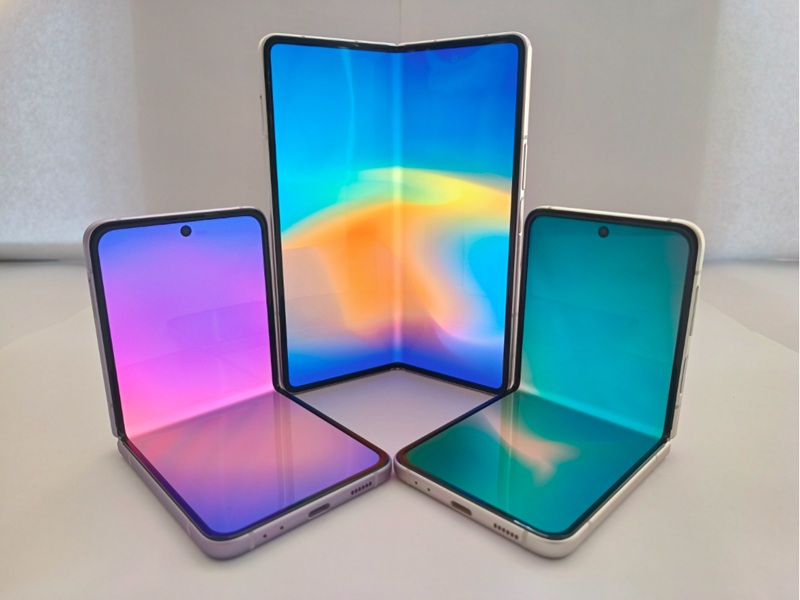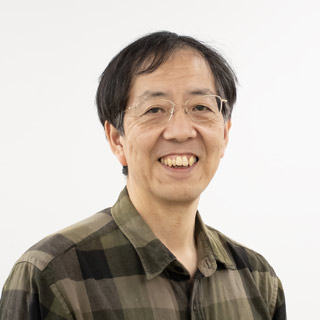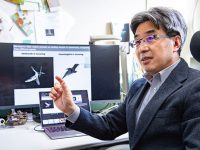Scientists use electronic sum-frequency generation spectroscopy to understand charge transport through organic light-emitting diodes
Studying the charge behavior inside multi-layered organic light-emitting diodes (OLEDs) is crucial to improve the efficiency and lifetime of such devices. But, this is extremely challenging to examine under operating conditions. To address this, researchers from Chiba University, Japan, used electronic sum-frequency generation (ESFG) spectroscopy to investigate interface-specific charge behavior inside OLEDs under light-emitting conditions and reported ESFG as a non-invasive and innovative method to observe electric-field formation in OLEDs.

Image title: Researchers examine the charge behavior inside organic light-emitting diodes (OLEDs)
Image caption: To increase the device lifetimes and efficiency of OLEDs, it is critical to understand the electrical charge behavior at different interfaces within. Professor Takayuki Miyamae and his team from Chiba University used the electronic sum-frequency generation spectroscopic method to understand the charge behavior and vibrational structure at different interfaces inside OLED devices.
Image credit & source link: Ka Kit Pang from Wikimedia Commons https://commons.wikimedia.org/w/index.php?curid=112715299
Image license: CC BY 3.0
Usage restrictions: Credit must be given to the creator.
High-resolution, full-color display devices like foldable mobile phones and ultrathin television sets use organic light-emitting diodes (OLEDs). Compared to other display technologies, OLEDs offer flexibility, self-lighting, low weight, thinness, superior contrast, and low voltage displays, attracting considerable attention in recent years. OLEDs comprise multiple layers of organic ultrathin films sandwiched between electrodes, each with specific functions inside the device. During the operation of an OLED device, charge accumulation and light emissions likely occur at the interface of these organic layers. Having multiple layers helps control charge accumulation, charge flow, and light formation, but exposure to these charges and light can damage the organic layers, limiting the life and efficiency of OLED devices.
Understanding the electronic structure at the interfaces within OLEDs while driven by voltage under operating conditions is challenging. To address this challenge, Professor Takayuki Miyamae, along with Mr. Tatsuya Kaburagi and Dr. Kazunori Morimoto from Chiba University, Japan, used a second-order non-linear spectroscopic technique called sum-frequency generation (SFG) to examine the vibrational and electronic properties at the interfaces within OLEDs.
When voltage is applied to an OLED system, light is emitted via the recombination of charges at the organic interfaces. This alters the SFG output, allowing researchers to study how charge accumulates and what electronic structural changes occur at the interfaces under different operating conditions. This nondestructive, innovative spectroscopic technique to study charge behavior inside OLEDs was published online by the team in the prestigious Journal of Materials Chemistry C on March 10, 2025.
In this study, three different multilayer OLEDs with different types and combinations of organic layers were used. Electronic SFG (ESFG) spectroscopy was conducted on three OLED devices to examine spectral changes induced by the charge behavior and electronic structure at the interfaces. “We examined the differences in the electric field intensities inside the OLED devices based on the applied voltage dependence of the ESFG spectra. This clarifies the role of field strength differences that affect the ease of internal charge flow and the light emission characteristics for the first time,” explains Prof. Miyamae about the team’s study.
ESFG spectral bands corresponding to each organic layer were identified by comparing the absorption spectra and layer configurations among the three OLED devices. The researchers observed changes in spectral signal intensities when applying voltages to the OLED devices, which were related to the changes in the electric field and charge behavior inside the OLEDs. Upon voltage application, the spectral signal intensity increased at the absorption band of the hole transport material (positive charge carriers inside the OLED), and signal intensity decreased at the absorption band of the light-emitting layer. This shows that internal charge flow across the organic layers within the OLEDs is different, leading to changes in spectra.
The team also applied square-wave pulse voltages on these devices to study how electric fields formed within these devices varied with time. They found that adding BAlq (a material used for electron transport in OLEDs) changes the position where the light is emitted in OLEDs. This shift in emission affects both the color and shape of the emitted light and how efficiently the device converts electricity into light.
“ESFG technique represents a novel, highly effective, nondestructive, and non-invasive spectroscopic approach for examining the electric field generation caused by injected charges in solid-state thin-film devices,” notes Prof. Miyamae about this innovative research work.
With this technique, material scientists can now design OLEDs with improved device lifetimes, energy efficiency, and cost reductions, eventually increasing the use of ultrathin organic devices in our everyday lives. “Moreover, this research can greatly shorten and rationalize materials development research, which now performs trial-and-error processes and long periods of degradation verification to assess device efficiency and lifetime,” adds Prof. Miyamae.
About Professor Takayuki Miyamae
A Professor at the Graduate School of Science and Engineering, Chiba University, Dr. Takayuki Miyamae completed his doctoral degree in ‘Electronic Structure and Electrical Properties of Conducting Polymers’ in 1995 from Nagoya University. His main research interests include material sciences and physical chemistry of interfaces to investigate the molecular arrangement in liquids, polymers, and organic semiconductor interfaces. He is affiliated with several academic societies like The Japan Society of Applied Physics, Japan OLED Forum, etc. Prof. Miyamae has over 130 publications to his credit with more than 2,000 citations.
Funding:
This study was partially supported by JSPS KAKENHI Grants-in-Aid for Scientific Research (grant numbers 22H02048 and 23K17811), Japan.
Reference:
Title of original paper: Probing charge behaviour in multilayer organic light-emitting diodes via electronic sum-frequency generation spectroscopy
Authors: Tatsuya Kaburagi1, Kazunori Morimoto1, and Takayuki Miyamae1,2,3
Affiliations: 1Graduate School of Science and Engineering, Chiba University
2Molecular Chirality Research Center, Chiba University
3Soft Molecular Activation Research Center, Chiba University
Journal: Journal of Materials Chemistry C
DOI: 10.1039/d4tc04970e
Contact: Takayuki Miyamae
Graduate School of Science and Engineering, Chiba University
Email: t-miyamae@chiba-u.jp
Public Relations Office, Chiba University
Address: 1-33 Yayoi, Inage, Chiba 263-8522 JAPAN
Email: koho-press@chiba-u.jp
Tel: +81-43-290-2018





